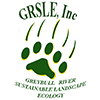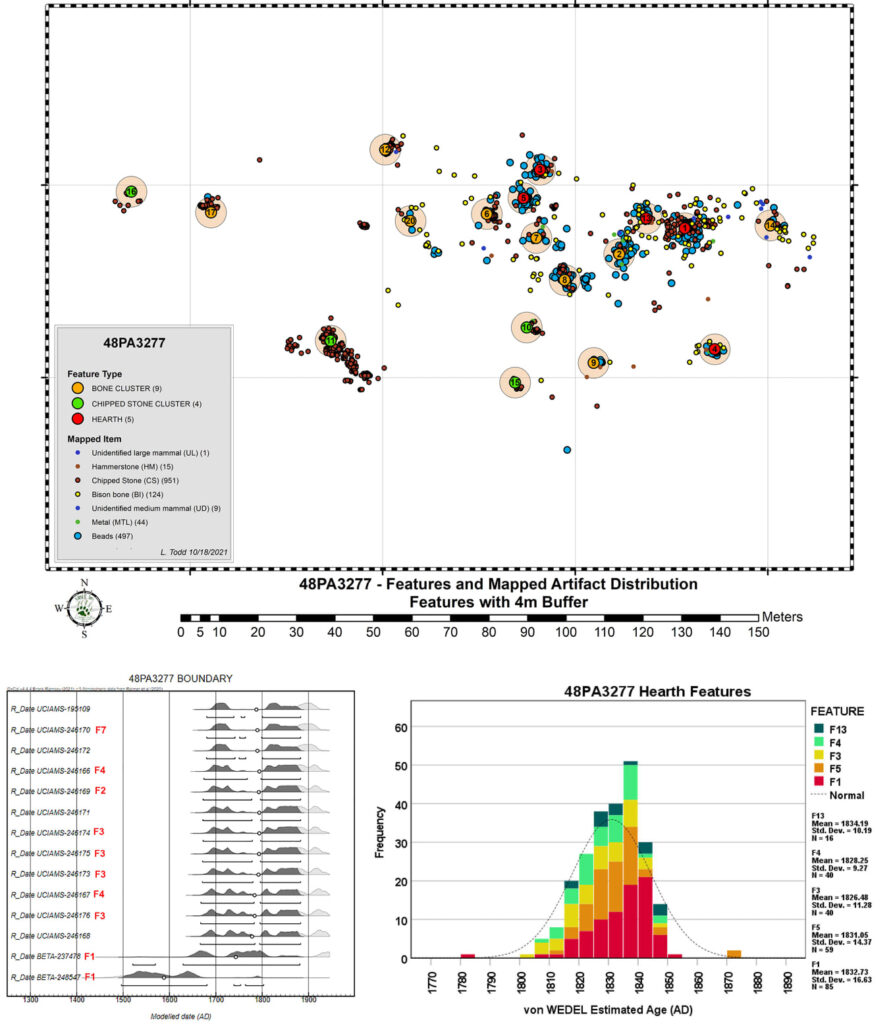
The largest assemblage of individually mapped glass beads from the GRSLE project is from 48PA3277. The 502 documented beads from this site are associated with over 20 features (hearths and activity areas) that are distributed across this slighlty larger than 1 ha site. The 14 radiocarbon dates from the site suggest a rather uniform Contact Period occupation, although the complexity of the calibration curve for this timeperiod makes assigning a specific date(s) of occupation difficult but the lack of white-heart beads (Billeck 2008) and the bead diameter based age of manufacture estimates (using von Wedell 2011) suggest likely last used before the 1840s.
Metal arrow points and point production debris (including quartzite hammerstones with distictive impact cones, perhaps from metal chisel) add to 48PA3277’s Contact Period record.
Feature 1 – Surface Hearth
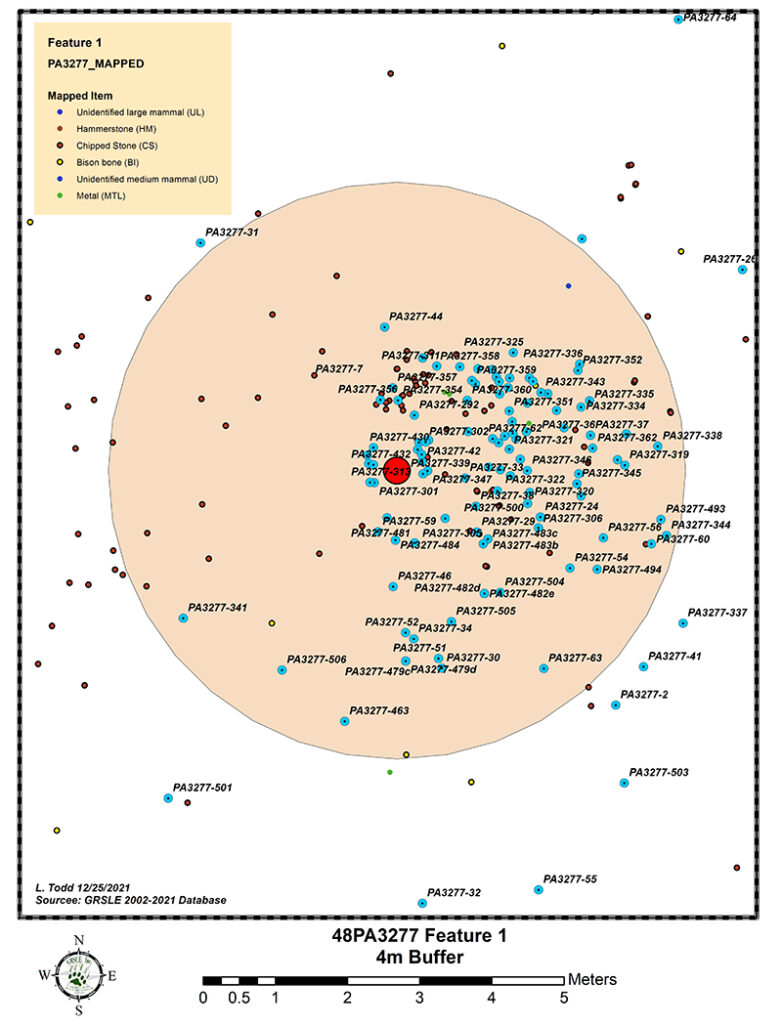
Feature 2 – Surface Hearth
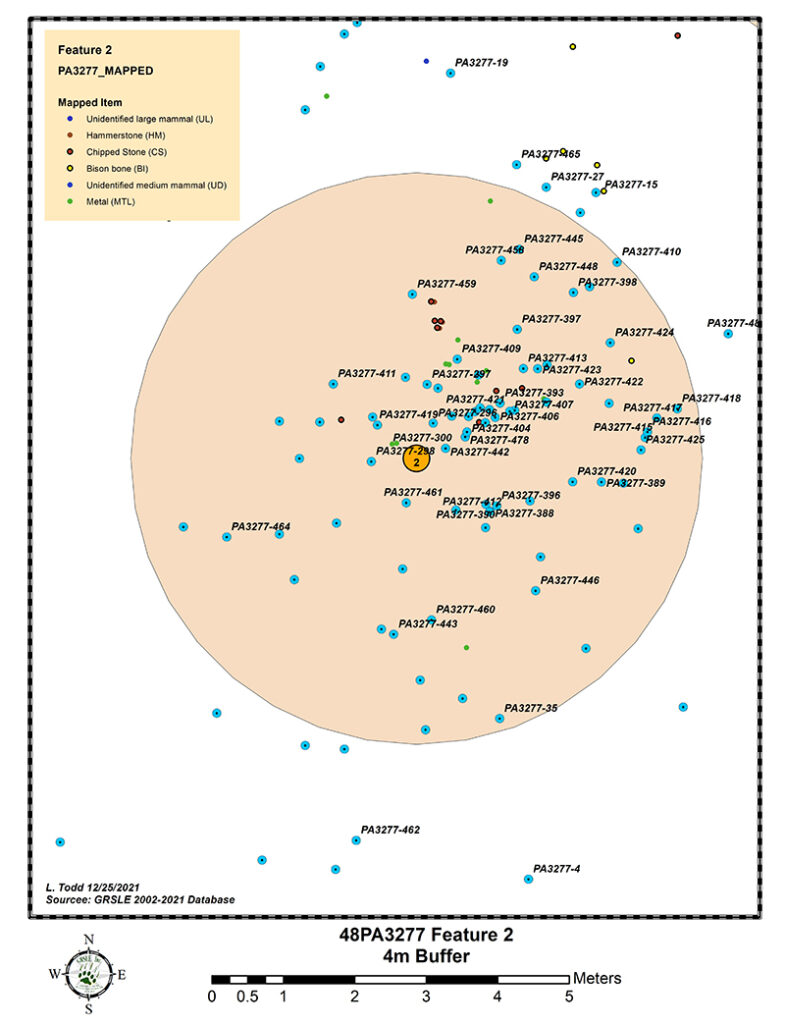
Feature 3 – Surface Hearth
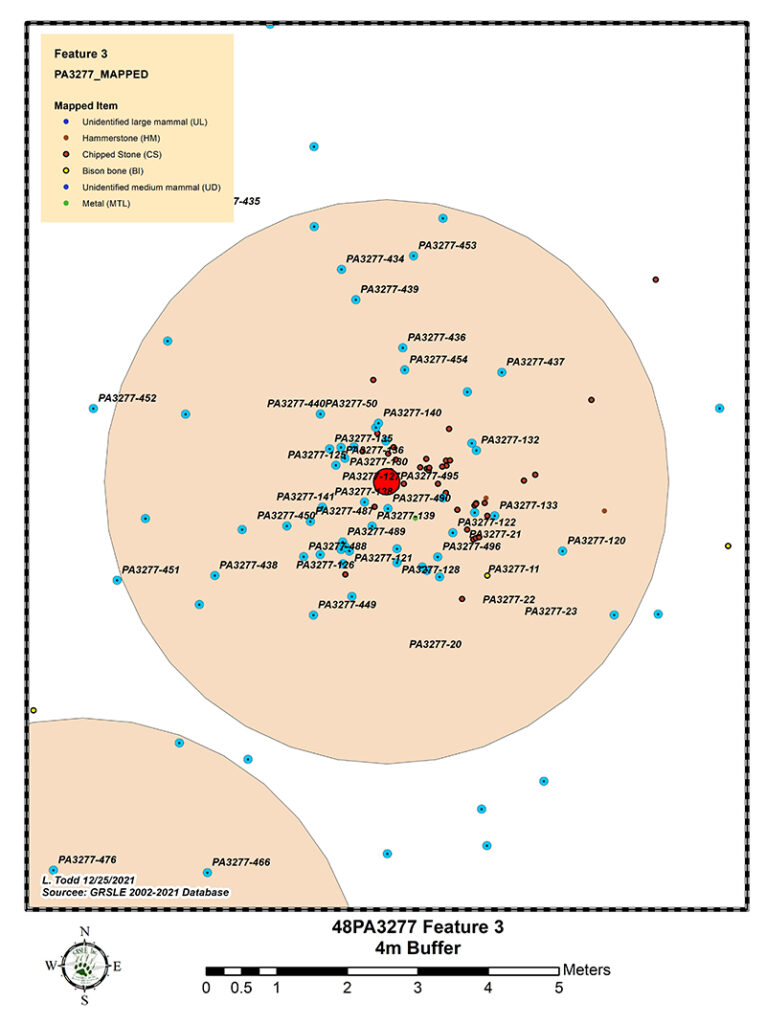
Feature 4 – Surface Hearth
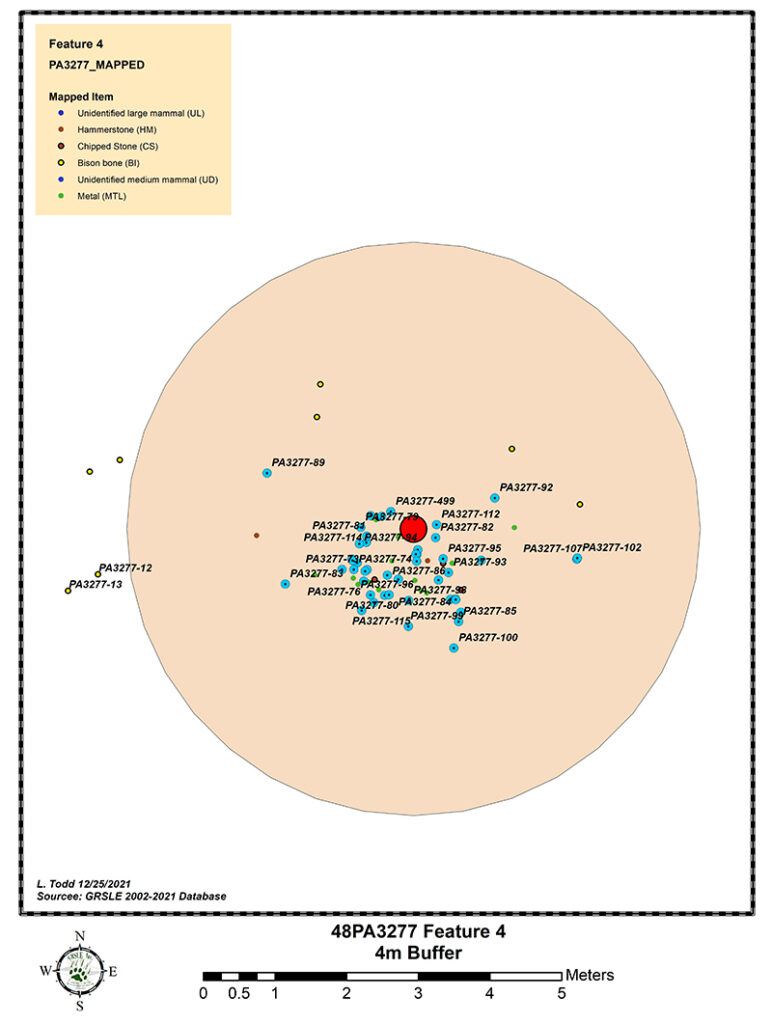
Feature 5 – Surface Hearth
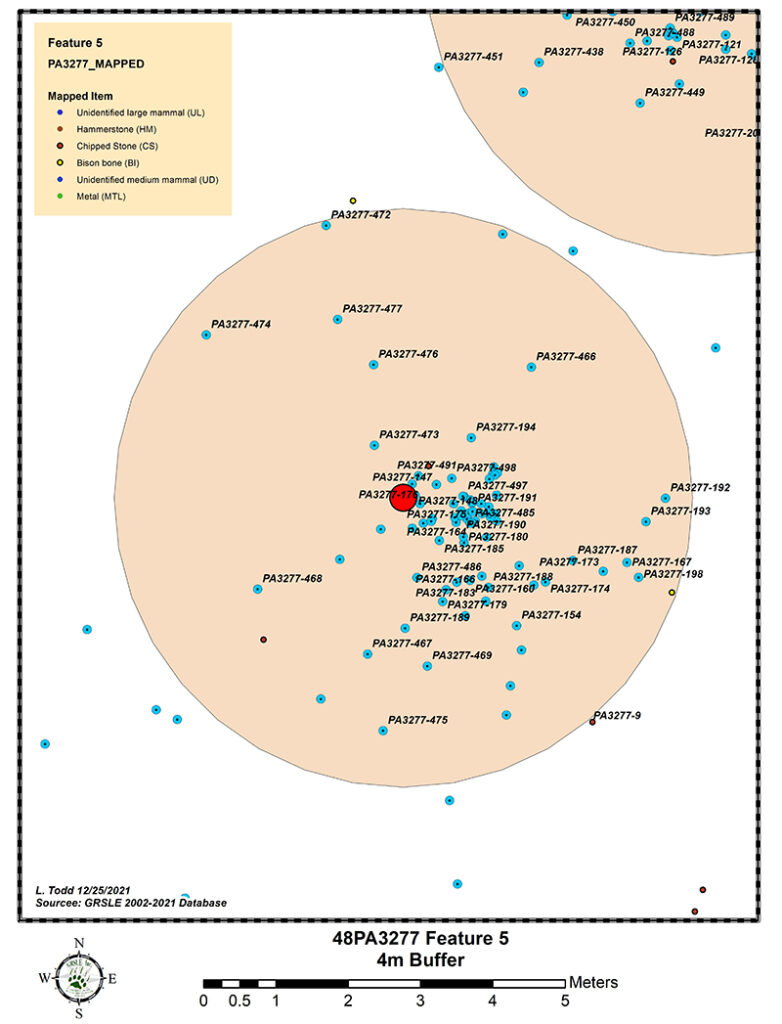
Feature 6

Feature 7

Feature 8
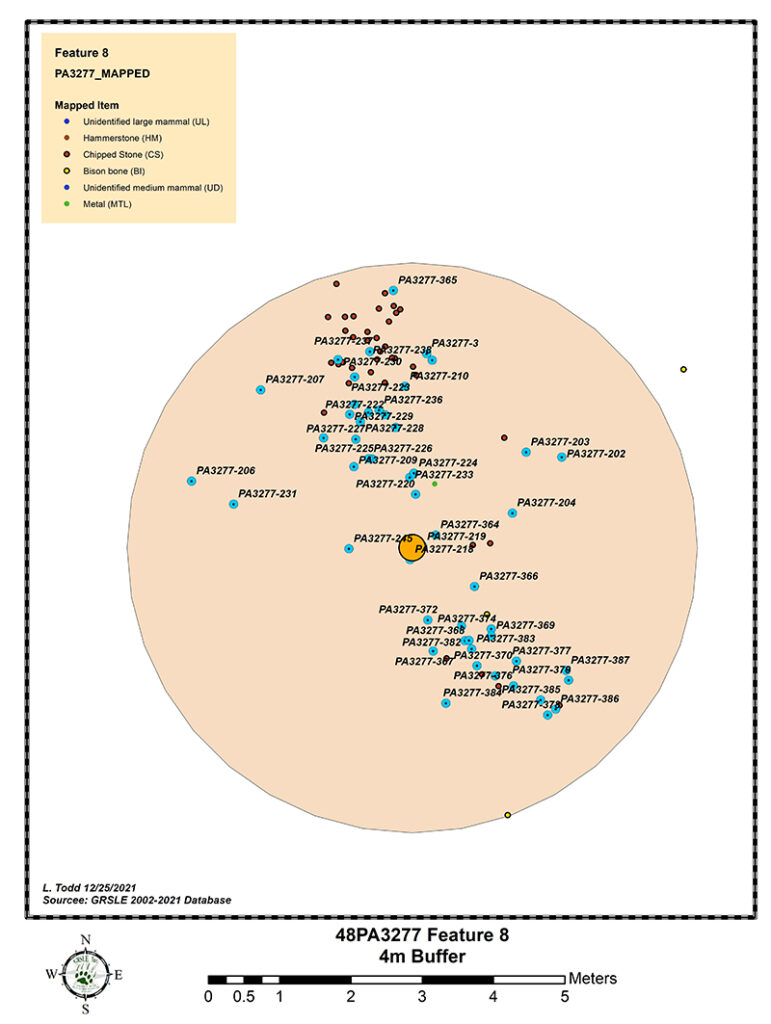
Feature 9
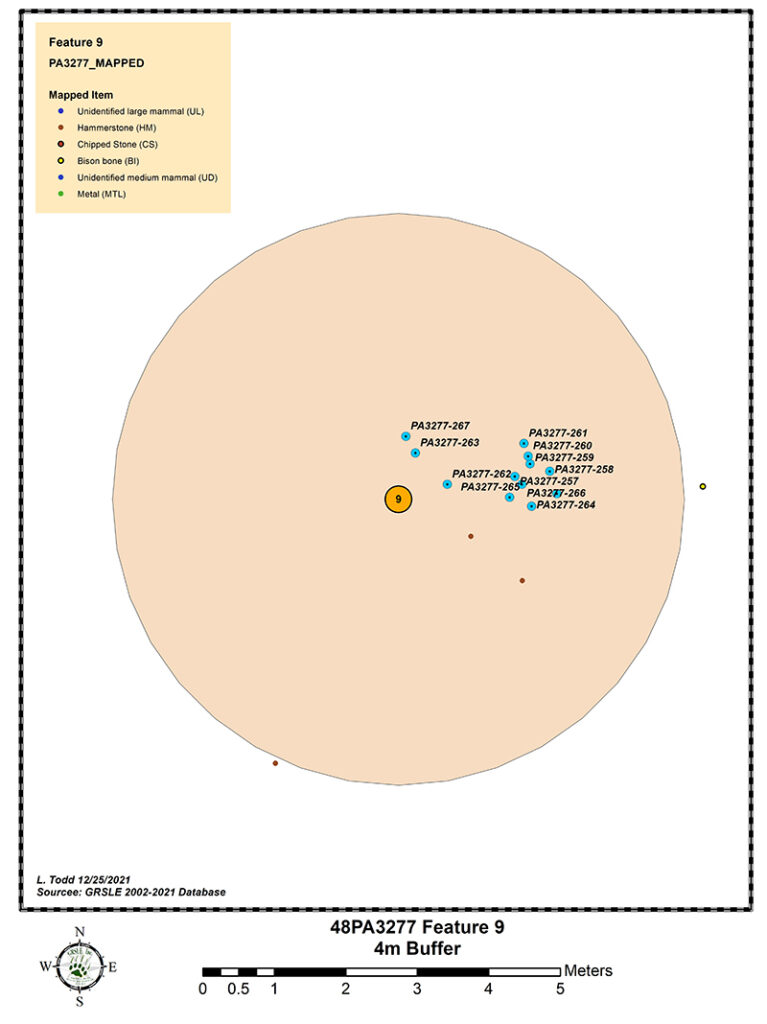
Figure 13 – Surface Hearth
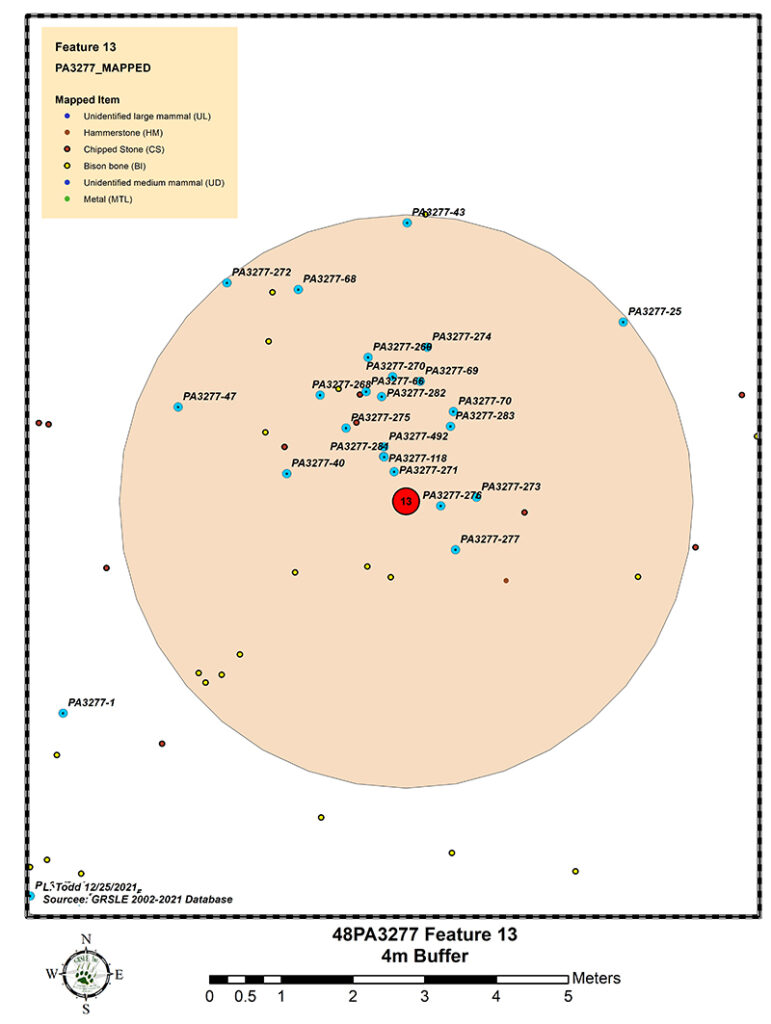
Feature 14
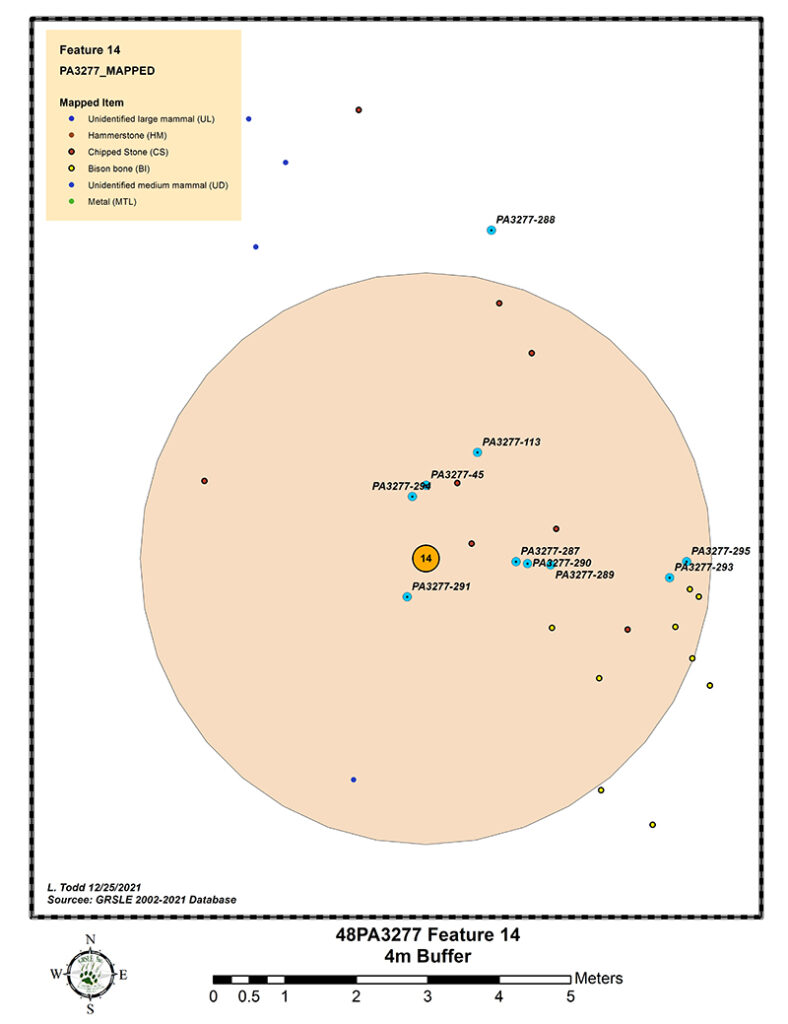
References Cited
Billeck, W.T. (2008). Red-on-White drawn or Cornelian Beads: A 19th-Century Temporal Marker for the Plains. Beads 20:49-61.
von Wedell, Christopher R. (2011). Methods of dating glass beads from protohistoric sites in the South Platte River Basin, Colorado. MA Anthropology, Colorado State University. MA Thesis Anthropology, Fort Collins.
